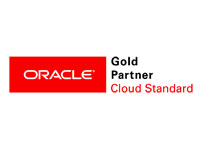Blog - Saas Vs Paas
SaaS vs PaaS - Explaining Oracle's Software and Platform as a Service Offerings and What They Mean to You
A large portion of the work I do for our clients is related to Business Intelligence , and Oracle Analytics Cloud specifically. With any of the cloud offerings, it is monumentally important for clients to understand the supporting infrastructure of those solutions and what roles will be expected and required from the client's team to administer and maintain the environments, particularly after an initial deployment.
Most of Oracle's software product offerings are classified as either a Software as a Service (SaaS) or a Platform as a Service (PaaS) . The difference in the two types of offerings typically boils down to how much effort and responsibility is required on the client's end to own and maintain the underlying components that support the solution.
SaaS
SaaS indicates a tool wherein Oracle spins up environments, takes care of patching for both the software and the underlying cloud hardware, and generally is responsible for the health and maintenance of the environment. This frees up resources for the client team to focus on developing solutions with the tool, rather than having resources dedicated to the back-end tasks.
This means that during the deployment stage, a customer should expect to be notified when the environment is ready, provided login credentials, and be ready to start configuring settings and properties specific to their environment. It also means that any patching is taken care of by Oracle with some notice ahead of time. Additionally, Oracle is on the hook should the service ever go down or have resource/capacity issues.
SaaS solutions are often desired when a client doesn't have access to a portion of IT resources to maintain servers, stay up to date on the latest patches and issues, etc. They can be readily owned solely by business areas and should effectively provide a "plug and play" type of experience.
PaaS
A PaaS solution , however, indicates a tool that, while stood up on Oracle's virtual machines within Oracle's network, still delegates control of the system to the client's admin to perform most health and maintenance tasks. Oracle Analytics Cloud , for example, is delivered in a PaaS model, meaning the OAC Admin must choose when to deploy patches to not just the OAC software, but also to the servers running the OAC services in the Oracle Cloud . Further, rather than just getting access to a clean environment as described above, the OAC Admin's first task when deploying a new environment is to create the individual services within Oracle's cloud service console that support the solution.
For example, the first task with setting up OAC is to establish the cloud compute, cloud storage, database as a service, and the actual analytics and/or Essbase services within their Oracle Cloud environment . This means that not only do you need resources available to perform these tasks, but also need resources who have a deep understanding of these processes and the impact of configuration step on the environment.
This may seem cumbersome, but it is the byproduct of Oracle making the decision to allow PaaS Admins more robust control of their environments by making the servers available to them. OAC environments, for example, allow admins to remote into the server to establish data connections, modify some system/environment configurations, migrate content from other (including on premise) systems, and generally have a deeper control over the deployment of the environment. The tradeoff for this flexibility has been to push ownership of these virtual servers back to the client for even routine patching.
For some clients, this setup is perfect. They have resources available in house to take up those tasks and the ability to micro manage the environment is worth the cost of also having to own the additional maintenance and administration tasks. For other clients, however, the main selling point of going to a cloud-based solution was to lower, or even remove, dependencies on IT resources to maintain environments and hardware. Buying a PaaS solution definitely does not meet that requirement.
Conclusion
It's important to understand the differences in the two offering types when evaluating any cloud tool, but especially Oracle's cloud family of products. You must understand exactly what will be required of your organization to maintain the level of quality in the deployment beyond the go-live period.
If you're interested in learning more about OAC or any of Oracle's Cloud offerings , contact us using the form below or find us on LinkedIn , Facebook , Twitter , or YouTube . We would love to assist your organization in advancing to the next stage of the Business Intelligence and EPM evolution
Contact MindStream Analytics
Want to know more about Oracle's Software and Platform as a Service Offerings? Please complete the form below and we'll get back to you shortly.
Partner SpotLight

Built using best in class hardware, market- leading business intelligence software and in-memory database technology, Oracle Exalytics is an optimized system that delivers speed of thought analysis with unmatched intelligence, simplicity and manageability. For customers evaluating Oracle Exalytics, MindStream Analytics houses an Oracle Exalytics machine dedicated to 'sandbox' environment testing.
